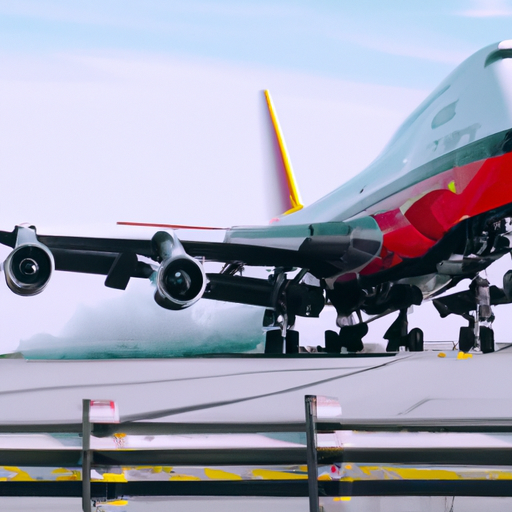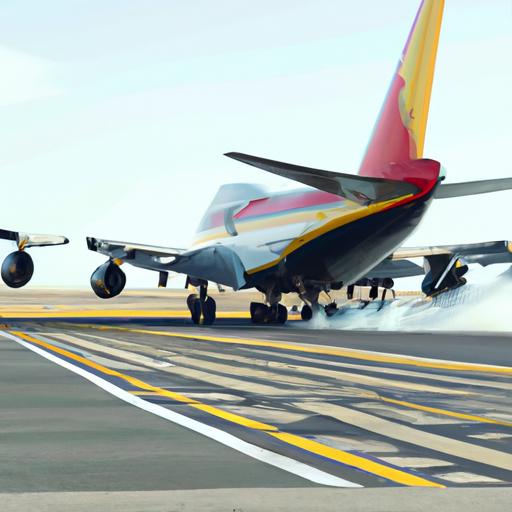
The Importance of Following Air Traffic Control Procedures
Kalitta Air 747 Tries To Take Off Without Clearance
Have you ever wondered what goes on behind the scenes when you board a plane and take off into the sky? It’s a complex process that involves many individuals working together to ensure your safety. One crucial aspect of this process is air traffic control procedures. These procedures are in place to maintain order and prevent accidents in the busy skies. Unfortunately, not everyone follows these procedures, as was the case with a recent incident involving a Kalitta Air 747.
Air traffic control procedures are designed to keep everyone safe and ensure that planes can take off and land without any issues. They involve a series of instructions and clearances that pilots must follow to ensure the smooth flow of air traffic. These procedures are put in place to prevent collisions and maintain a safe distance between aircraft.
In the case of the Kalitta Air 747, the pilot attempted to take off without receiving proper clearance from air traffic control. This is a serious violation of the established procedures and could have had disastrous consequences. Thankfully, air traffic control was able to intervene and prevent any accidents from occurring.
This incident highlights the importance of following air traffic control procedures. When pilots disregard these procedures, they put themselves, their passengers, and other aircraft at risk. The skies are a busy place, with planes coming and going at all times. Without proper coordination and adherence to procedures, chaos could ensue.
Air traffic control procedures are in place for a reason. They ensure that planes are spaced out appropriately, allowing for safe takeoffs and landings. They also provide pilots with vital information about weather conditions, runway availability, and any potential hazards. By following these procedures, pilots can make informed decisions and avoid unnecessary risks.
In addition to maintaining order in the skies, air traffic control procedures also help prevent mid-air collisions. By providing clearances and instructions, air traffic controllers ensure that planes are on separate flight paths and maintain a safe distance from one another. This is crucial, especially in congested airspace, where multiple planes are operating in close proximity.
Following air traffic control procedures is not only important for pilots but also for air traffic controllers themselves. These professionals are responsible for managing the flow of air traffic and ensuring everyone’s safety. By following established procedures, pilots make the controller’s job easier and contribute to a more efficient and safe airspace.
It’s important to remember that air traffic control procedures are not arbitrary rules. They are developed based on years of research, analysis, and experience. They are constantly updated and refined to adapt to changing technologies and air traffic patterns. By following these procedures, pilots are contributing to the ongoing improvement of aviation safety.
In conclusion, the recent incident involving a Kalitta Air 747 attempting to take off without clearance serves as a reminder of the importance of following air traffic control procedures. These procedures are in place to maintain order, prevent accidents, and ensure the safety of everyone involved. By adhering to these procedures, pilots can contribute to a more efficient and safe airspace. So the next time you board a plane, remember that there are dedicated professionals working behind the scenes to ensure your safe journey.
Analyzing the Potential Risks of Unauthorized Takeoffs

Kalitta Air 747 Tries To Take Off Without Clearance
Have you ever wondered what could happen if an aircraft attempted to take off without proper clearance? Well, recently, a Kalitta Air 747 tried to do just that, and it raises some serious concerns about the potential risks involved in unauthorized takeoffs.
First and foremost, let’s discuss the importance of clearance before takeoff. When an aircraft is preparing to depart, it must receive clearance from air traffic control (ATC) to ensure a safe and orderly departure. This clearance includes information about other aircraft in the vicinity, runway conditions, and any potential hazards that the pilot needs to be aware of. Without this crucial information, attempting to take off can be extremely dangerous.
In the case of the Kalitta Air 747, the pilot made a grave error by attempting to take off without clearance. This not only put the aircraft and its passengers at risk but also posed a significant threat to other aircraft in the area. Without proper communication with ATC, the pilot had no way of knowing if there were any conflicting departures or arrivals that could have resulted in a catastrophic collision.
One of the potential risks of unauthorized takeoffs is the lack of situational awareness. Pilots rely heavily on ATC to provide them with up-to-date information about the airspace they are operating in. Without this information, they are essentially flying blind. This can lead to a variety of dangerous situations, such as flying into restricted airspace, encountering severe weather conditions, or even colliding with other aircraft.
Another risk is the potential for runway incursions. When an aircraft attempts to take off without clearance, it can inadvertently enter an active runway where other aircraft may be landing or taking off. This can lead to a collision or a near-miss situation, both of which have the potential for catastrophic consequences. Runway incursions are a serious concern in aviation, and unauthorized takeoffs only exacerbate this risk.
Furthermore, unauthorized takeoffs can also have legal consequences for the pilot and the airline. Aviation authorities take these incidents very seriously and may impose severe penalties, including fines, license suspensions, or even criminal charges. These consequences not only affect the individuals involved but also have a broader impact on the airline industry as a whole. It undermines the trust and confidence that passengers have in the safety and professionalism of the industry.
To prevent unauthorized takeoffs, it is crucial for pilots and airlines to prioritize proper communication and adherence to established procedures. Pilots should always double-check their clearance before attempting to take off and ensure that they have received all necessary information from ATC. Airlines should also provide comprehensive training to their pilots, emphasizing the importance of following protocols and the potential risks associated with unauthorized takeoffs.
In conclusion, the recent incident involving a Kalitta Air 747 attempting to take off without clearance highlights the potential risks involved in unauthorized takeoffs. From the lack of situational awareness to the increased risk of runway incursions, these incidents pose a significant threat to the safety of the aircraft, its passengers, and other aircraft in the vicinity. It is crucial for pilots and airlines to prioritize proper communication and adherence to established procedures to prevent such incidents from occurring. By doing so, we can ensure a safer and more secure aviation industry for everyone involved.
Lessons Learned from Kalitta Air’s Unauthorized Takeoff Incident
On a sunny day in July, a Kalitta Air 747 cargo plane attempted to take off from a runway at Willow Run Airport without proper clearance. The incident, which could have had disastrous consequences, serves as a stark reminder of the importance of following proper procedures and adhering to air traffic control instructions.
The incident unfolded when the Kalitta Air 747, loaded with cargo and ready for departure, began to taxi towards the runway. However, instead of waiting for clearance from air traffic control, the pilot decided to proceed with the takeoff. This decision, made without proper authorization, put the safety of the crew, the aircraft, and potentially other planes in the vicinity at risk.
Thankfully, air traffic control quickly realized the unauthorized takeoff and immediately intervened. They urgently radioed the pilot, instructing them to abort the takeoff and return to the taxiway. The pilot, realizing their mistake, promptly complied with the instructions and brought the aircraft to a halt.
This incident serves as a valuable lesson for all pilots and aviation professionals. It highlights the critical importance of adhering to air traffic control instructions and obtaining proper clearance before taking any action. The consequences of disregarding these procedures can be severe, potentially leading to accidents, injuries, and even loss of life.
One of the key takeaways from this incident is the need for effective communication between pilots and air traffic control. Pilots must always maintain open lines of communication with air traffic control, ensuring that they understand and comply with all instructions. Likewise, air traffic controllers must be vigilant in monitoring aircraft movements and promptly intervene when necessary.
Furthermore, this incident underscores the significance of situational awareness. Pilots must be fully aware of their surroundings, including the status of other aircraft in the vicinity, runway conditions, and any potential hazards. By maintaining a high level of situational awareness, pilots can make informed decisions and avoid dangerous situations.
Another important lesson from this incident is the need for a strong safety culture within the aviation industry. All aviation professionals, from pilots to ground crew, must prioritize safety above all else. This means following established procedures, conducting thorough pre-flight checks, and continuously seeking opportunities for improvement.
In the aftermath of this incident, Kalitta Air took immediate action to address the shortcomings that led to the unauthorized takeoff. They conducted a thorough investigation, identifying the root causes of the incident and implementing corrective measures to prevent similar occurrences in the future. This proactive approach demonstrates the airline’s commitment to safety and serves as an example for others in the industry.
In conclusion, the unauthorized takeoff incident involving a Kalitta Air 747 at Willow Run Airport serves as a powerful reminder of the importance of following proper procedures and adhering to air traffic control instructions. It highlights the need for effective communication, situational awareness, and a strong safety culture within the aviation industry. By learning from this incident and implementing the necessary changes, we can work towards a safer and more secure aviation environment for all.


